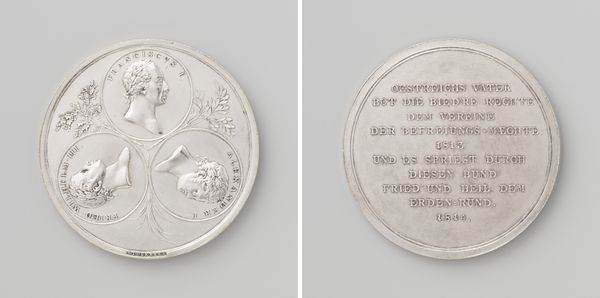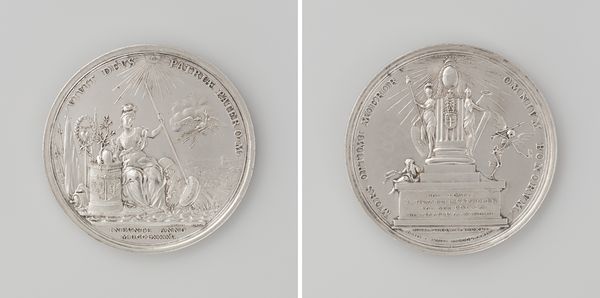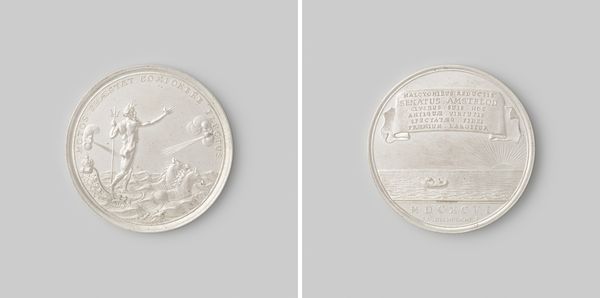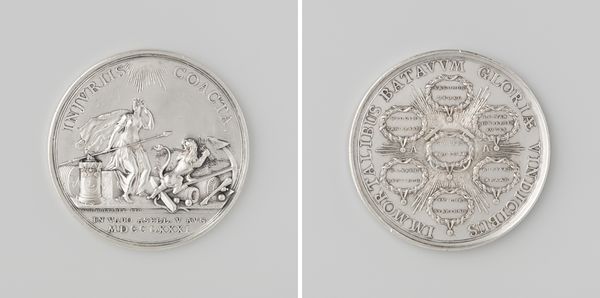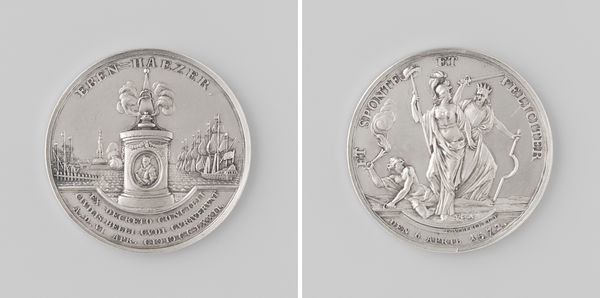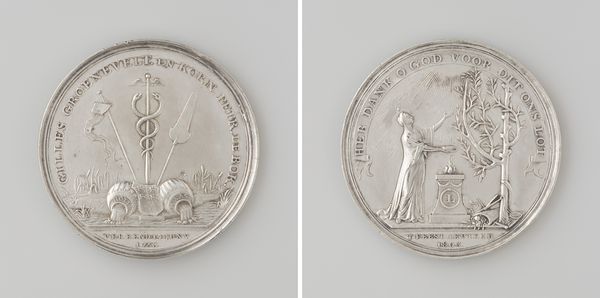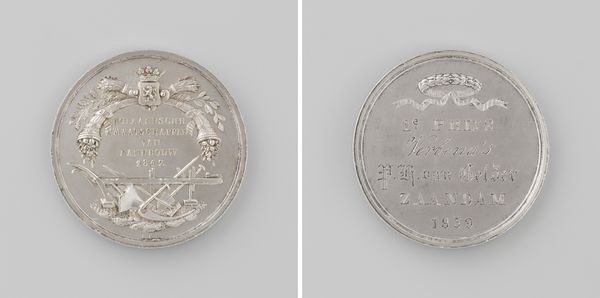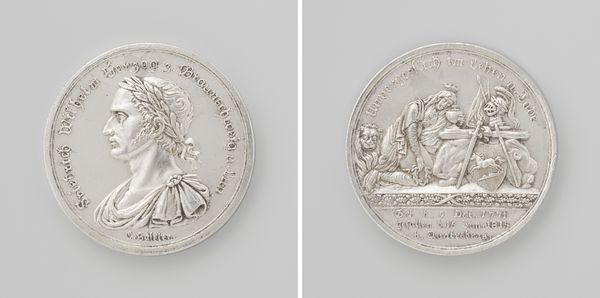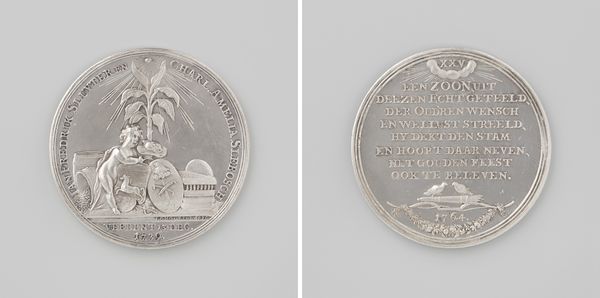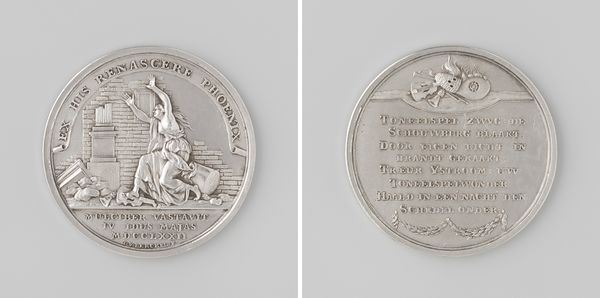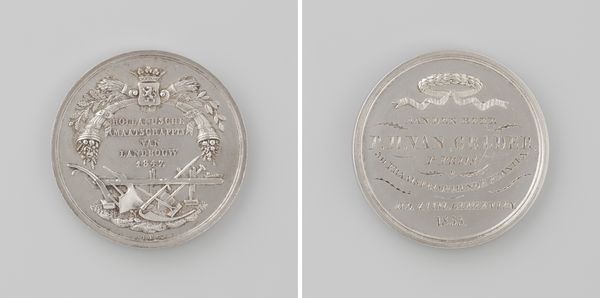
metal, sculpture
#
portrait
#
neoclacissism
#
metal
#
sculpture
#
history-painting
Dimensions: diameter 3.7 cm, weight 12.94 gr
Copyright: Rijks Museum: Open Domain
Editor: This is a metal commemorative medal from 1814, titled "Overlijden van Johanna Catharina, gravin van Ross," by Daniel Friedrich Loos. It's fascinating; there’s an almost classical formality to it, and given the context of death, I am curious to know how grief is being expressed within such a formal style. What do you see in this piece? Curator: What strikes me is how the visual language of Neoclassicism here intersects with the societal role of women at the time. Neoclassicism often draws from a perceived 'golden age,' associating it with virtue. Look at the woman's idealized profile, almost like a Roman cameo. What message do you think associating her with that aesthetic conveys about her societal value and impact after her death? Editor: I see your point. Her image is promoting her value. But how much was her actual character or real-life contribution considered? Or is it merely leveraging a recognizable, respected visual vocabulary? It feels like a political act as much as a memorial. Curator: Exactly. Memorializing a woman, especially within this framework, is inherently a statement. This isn't just about personal loss, but about reinforcing and perhaps even constructing her legacy within the broader narrative of societal expectations and aristocratic lineage. Does knowing it has connections to history paintings make you interpret it differently? Editor: It definitely contextualizes the level of detail and planned approach that was put into its production. Curator: Understanding this medal requires us to look beyond its aesthetic appeal and examine the power dynamics, gender roles, and social messaging it embodies. We have to acknowledge how visual choices are never neutral; they participate in constructing and perpetuating systems of belief. Editor: I never really considered how medals and the act of commemoration can themselves be cultural artifacts deeply embedded in specific ideological contexts. Thank you for shifting my perspective!
Comments
No comments
Be the first to comment and join the conversation on the ultimate creative platform.
